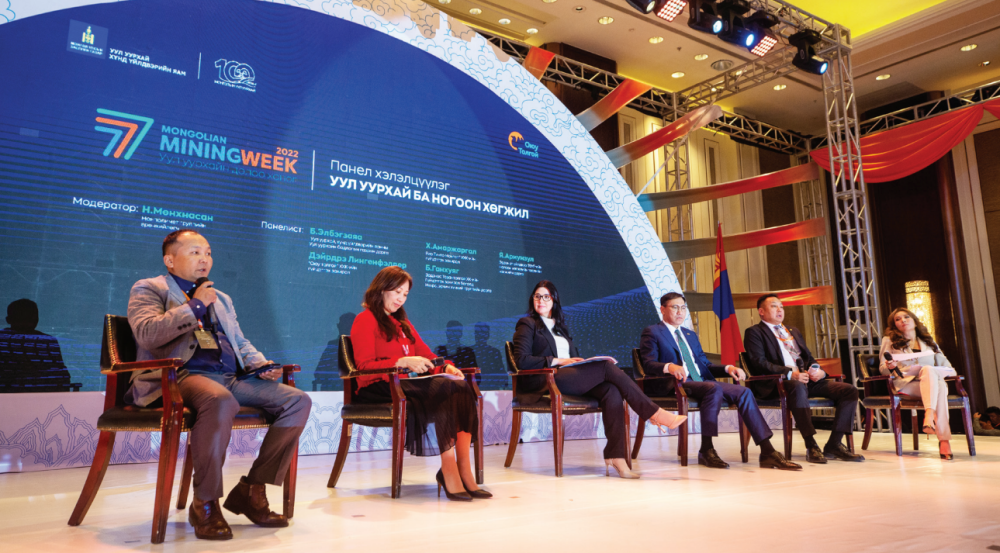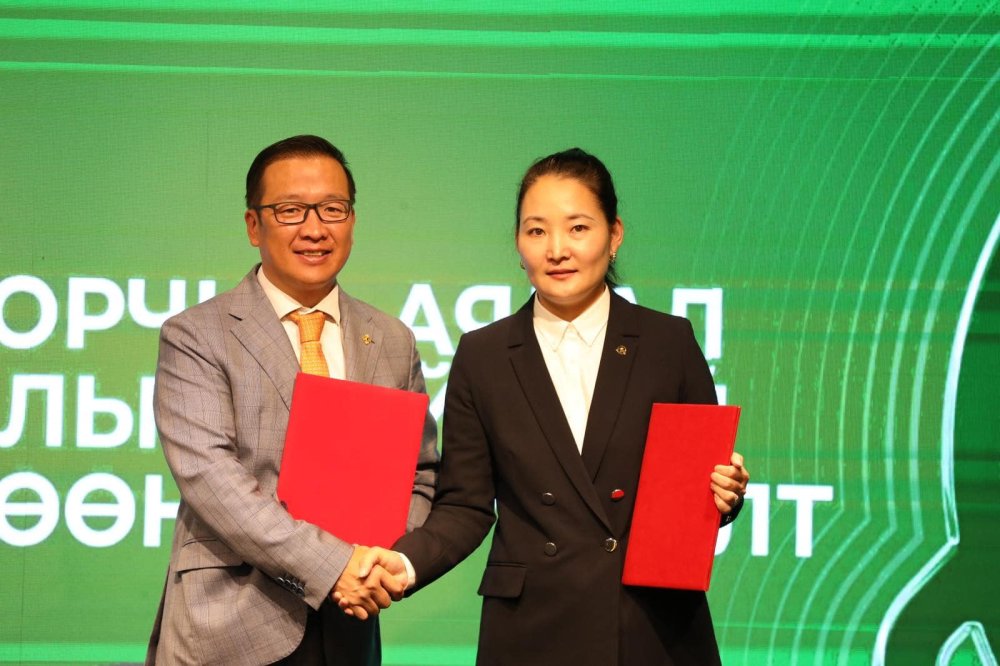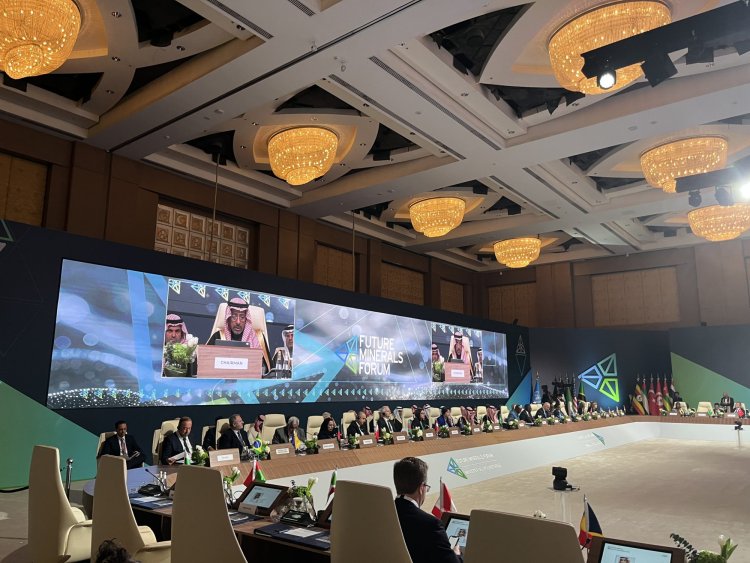 SUGAR.G General Manager - Communities of “Oyu Tolgoi” LLC
SUGAR.G General Manager - Communities of “Oyu Tolgoi” LLC This year marks the 100th anniversary of Mongolia’s mining industry. In this century, the mining industry has developed based on its achievements, lessons learned, and experience. But it is also true that the development of the industry has been neglecting some important factors while focusing more on technology, economic growth, investment and sales. Environmental and social dimensions are a priority in the mining industry and are an important indicator to measure the performance of a mining company. Therefore, Mongolia’s mining sector must pay more attention and efforts to environmental and social dimensions in mining in order to thrive the mining sector along with all dimensions in the coming years or so. I intend to share my thoughts on this complex system of community relations social performance.
This year marks the 100th anniversary of Mongolia’s mining industry. In this century, the mining industry has developed based on its achievements, lessons learned, and experience. But it is also true that the development of the industry has been neglecting some important factors while focusing more on technology, economic growth, investment and sales. Environmental and social dimensions are a priority in the mining industry and are an important indicator to measure the performance of a mining company. Therefore, Mongolia’s mining sector must pay more attention and efforts to environmental and social dimensions in mining in order to thrive the mining sector along with all dimensions in the coming years or so. I intend to share my thoughts on this complex system of community relations social performance.WHY SOCIAL ELEMENTS AND DIMENSIONS ARE IMPORTANT IN THE MINING INDUSTRY?
The social dimensions of measuring a mining company’s performance is one of the important factors in gaining “social license” or broad community support. This applies to the mining company’s comprehensive system of Communities and Social Performance. Communities and social performance are activities that go beyond corporate social responsibility and require a wide range of complex systems and expertise. Communities and Social performance system have the following interrelated components: They are implemented interdependently in the 6 phases of the mine life cycle. (1. exploration, 2. feasibility 3. construction, 4. operation 5. closure, and 6. post-closure)
1.COMMUNITY RELATIONSHIPS AND PARTNERSHIPS
There is never a perception that the land for mining operations is unmanned or unoccupied. Even if it’s a remote wilderness, there are people who depend on it. Therefore, it is necessary for any mining company to identify, map, and analyze the area of operations and local communities as a priority. If primary community relations works such as identification and analysis of stakeholders aren’t carried out at the exploration phase, then more problems may arise in the next phase. The exploration phase is a very important period to build relationships with local community. Because this is where the first perception-based relationship with the locals is formed. This is a critical period to define future of relationships between mine and communities. The key activities of community relations include:
• Assessment, mapping and analysis to identify stakeholders
• A partnership framework for working with stakeholders
• Complaint and dispute resolution mechanism.
• “Responsive” communications plan - providing information, consultation, feedback and reporting. Key guiding principles are respectful, inclusive, using plain language that community can comprehend easily, accessible, user friendly, relevant, and timely.
These are continuous activities at all phases of mining life cycle, starting from exploration, the first phase of mining.
2. THE KNOWLEDGE BASE
This is the process of conducting baseline studies to explore the environmental, social and economic conditions of the local areas and communities where the mining will be carried out, and conducting impact assessments to understand all impacts of mining operations on the local environment, society and economy and define key control managements that manage impacts. It is more important to perform these activities at the exploration and feasibility phases. In the result, it will provide opportunity to thoroughly understand the environment in which to operate, to understand the local community with whom we will engage and work in the long run and to determine the areas of partnerships that is a foundation to build enduring community relations. The baseline study and impact assessment will help in making informed decisions for mining companies. However, baseline studies and impact assessment are not just done once only. It should be reviewed every 5-10 years, and the baselines information should be updated with the information of new developments in the area. This is due to the fact that human society is dynamic and constantly changing, and we reflect these changes in our actions. The knowledge base includes the following activities: • Environmental, social and economic baseline study.
• Environmental, social and economic impact assessment. Assessing the impacts of the company’s activities on community.
• Social risk assessment. Assessing social risks that may impact on mining business and operations.
3.PLANNING AND MANAGEMENT:
Based on the above-mentioned studies and assessment, the areas of action for community and social performance are determined. It has the following 2 main areas:
• Impact mitigation: After baseline study and the impact assessment, we plan and implement control measures to mitigate and manage the social and economic impacts in the area. It is the company’s responsibility to implement impact mitigation actions. It is necessary to plan and allocate budget and resources for impact mitigations.
• Contribution to local sustainable development and benefits delivery: Contributing tangibly to local sustainable development beyond mitigating only impacts of its operation is pivotal for mining companies to build good relationships with the local community which is of great importance of gaining and maintaining a social license to operate. The relationship between the parties to cooperate in local development is regulated by the Community Agreements. It is a enduring foundation for long-term cooperation and partnership. It is important to create a participatory and inclusive process, good governance and transparency in partnership mechanisms. These activities are mostly carried out at feasibility, construction and operation phases. They will also inform long-term planning for mine closure and post-closure phases. It should be noted that impact mitigation measures are also taken during exploration.
4. MONITORING, EVALUATION AND AUDIT:
Internal monitoring and external evaluation and audit are carried out at regular intervals to ensure the reliability of the complex system of communities and social performance. It provides opportunities for continuous improvement of the operations performance and applies to all stages of the mining. These are the common and fundamental elements of a complex system of communities and social performance. Community Relations are subjective because they are based on human relations. For this reason, it should be emphasized that it cannot be strictly systematized and modeled. There is no one-size-fits-all for solving problems associated with Community Relations works. Because every region has its own unique characteristics.
Therefore, the system of communities and social performance is a process that continues to develop over time, is updated step by step in the process of development, and it is a continuous improvement process. Mining companies employ dedicated Community Relations Partitioners to manage such a complex system in a consistent manner. If all mining companies implement this system in its operations and employ and train their Community Relations Practitioners, it will greatly contribute to solving the current and merging issues.
“Oyu tolgoi” LLC has developed this system for about 20 years, implemented in its operations, gaining experience, and continues to develop and empower its Community and Social Performance team. Communities and Social Performance play a critical role in gaining and maintaining social license to operate and building robust community relationships and partnerships. Therefore, the government, private sector, and civil society organizations should work together to create a common understanding of the communities and social performance of the mining industry, and to create an integrated system step by step.
 Mining Insight Magazine, September 2022
Mining Insight Magazine, September 2022





















